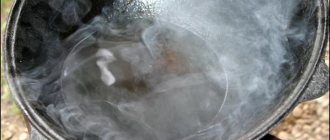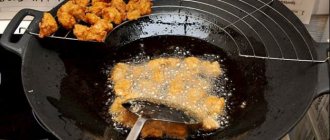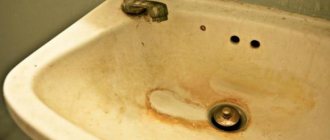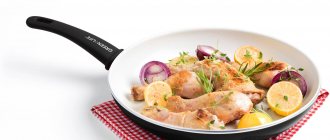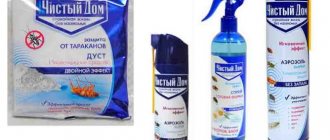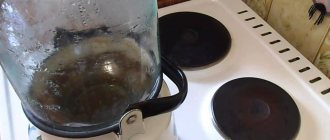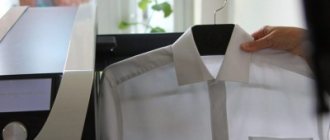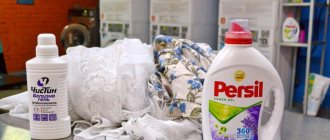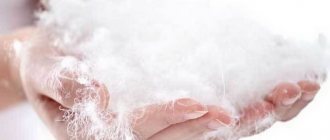A cauldron is a kitchen item that has wide application possibilities. It makes excellent pilaf at home or porridge over an open fire. With a wide variety of cookware, it can be difficult to figure out which cauldron is better - aluminum or cast iron - and how to choose a cauldron for a fire. Let's look at this issue in detail.
In a cauldron you can cook excellent pilaf at home or porridge over an open fire.
Manufacturers rating
- Kukmara. Perhaps the best manufacturer of cast iron cauldrons. A sufficient range of sizes, thick walls and aesthetic appearance.
- VARI - cast cookware with non-stick coating. The protective layer is applied by spraying. The brand's products are distinguished by modern design and reasonable prices.
- Mayer&Boch. A German company that produces cauldrons with glass lids, as well as a number of models with glass-ceramic coating.
- Forester is a manufacturer of unusual models with frying pan lids. Cauldrons can be used both on conventional gas stoves and on an open fire.
- Staub is a French company that produces professional-grade cookware. High (but quite justified) price and premium quality.
When purchasing a thick-walled aluminum cauldron, look at the thickness of the edges. It must be at least 1 cm.
There is an opinion that to prepare a delicious dish it is not enough to have the necessary ingredients; you also need the right kitchen utensils. This means there is no doubt that you can create delicious Uzbek pilaf, since purchasing the right cauldron is a matter of time. By the way, during the culinary action, do not forget to add a drop of your soul, and then you can be sure that your loved ones will appreciate your culinary masterpiece.
Do not buy an Uzbek cast iron cauldron without reading this article! You'll be throwing money away!
Anyone who has tried real Uzbek pilaf will definitely say that there is no better pilaf cooked in a cast iron cauldron in the world. And so, I personally have already sold over a thousand Uzbek cast iron cauldrons. During this time, I have collected a huge database of reviews and questions that I want to share with you. In this article I will try to share a lot of useful information before purchasing a cast iron cauldron, its operation and, of course, caring for it. I only ask for feedback from you - ask your questions and leave feedback. You need to buy a cast iron cauldron wisely!
Types of cauldrons
To choose the right cauldron, you need to understand the material. The most common cauldrons are aluminum or cast iron, but the following utensils may be found:
- Enameled;
- With non-stick coating;
- Made of copper.
Which cauldron to choose:
- To create national dishes of Central Asia, it is better to purchase a cast iron cauldron (especially if you want to use it over a fire).
- For home-cooked meals, it is better to purchase an aluminum or copper cauldron with non-stick properties.
- For outdoor cooking, it is worth taking an aluminum cauldron, since it is lightweight.
- For a small family, a cast iron cauldron size of at least 5-6 liters is required.
- For a large company, a real cauldron should have a volume of 15 liters.
- The recommended wall thickness of cast iron is more than 1 cm, regardless of the material.
Form
The shape of the cauldron is hemispherical. This is an important condition for uniform heating of the dishes. However, it can have a flat bottom so that during the cooking process it does not move, but stands level. Such dishes can be easily installed on the stove burner.
Such dishes can be easily installed on the stove burner.
Volume
It is better to buy larger dishes in terms of volume, since it is better to mix the dish in it. The volume must be indicated at the bottom, usually from 2 to 20 liters.
In terms of volume, it is better to buy larger dishes, since they can better mix the dish.
You can calculate the required volume for a family using the following calculations: 1.5-2 liters of volume per person, for example:
- A 5-liter cauldron is sufficient for 2-3 people;
- For 5-6 – 8 liters;
- For a family of 10 people, a cauldron with a volume of 15-20 liters would be optimal.
Lid
The manufacturer's package must include a cover. It should fit well to the edges and not leave any open space for steam to escape. It is made from the same metal as the cast iron itself, sometimes made from boards (for the outdoor option). The cookware can also be equipped with a stationary handle for easy cooking over a fire.
The lid should fit well around the edges and leave no open space for steam to escape.
Wall thickness
The wall thickness of the cauldron should be at least 3 cm, but not more than 6 cm. However, you can use options with a slightly larger or smaller thickness.
The wall thickness of the cauldron should be at least 3 cm, but not more than 6 cm.
It is not advisable to buy specimens with a wall thickness of up to 10 mm. It should be remembered that a thick-walled cauldron captures and retains temperature better.
Material. The importance of uniform heat dispersion
Let's look at what cauldrons are made of, how they differ, and how to choose the right cast iron cauldron.
Uniform heating of the ingredients is completely determined by the thickness of the walls of the cookware, and you should also pay attention to the internal coating of the product. It should not have defects, as this negatively affects uniform heating.
Many women are of the opinion that utensils cast from cast iron are the most suitable option, as they meet the necessary requirements. It heats up slowly, the heat is evenly distributed over the entire surface, and lasts for a long time (if the cast iron is removed from the stove).
Thick sides, as well as a tight-fitting lid, also affect heat retention. Cooking in this cookware takes longer, but this is not a disadvantage, since many dishes require a long process.
Cookware with non-stick properties quickly becomes unusable, because after a certain time the coating begins to peel off and pieces of it can get into the food. Frequent stirring of food leads to changes in the durability of the coating. However, its characteristics are similar to cast iron utensils. But products, as a rule, are produced with a coating that is not thick enough, so the heat does not last too long. Other disadvantages include the appearance of rust in places where the coating is damaged and heavy weight.
Cookware with non-stick properties quickly becomes unusable.
According to housewives, enameled cast iron is considered a relatively good option.
Enameled cauldron.
A copper cauldron is practically not used today, since all its compounds are toxic and it is easily subject to rust. Therefore, copper cast iron has to be cleaned frequently. It heats up very quickly, but also cools down quickly. Also, such utensils have thin walls, only the bottom is slightly compacted. However, it heats the food inside almost to the very top. Therefore, it will not be possible to simmer the products contained in it.
A copper cast iron needs to be cleaned frequently.
Cast iron utensils are excellent for preparing pilaf, and aluminum cauldrons are an excellent option for going outdoors, as they are lightweight.
It must be remembered that aluminum cast iron absorbs heat well, and therefore heats up quickly. It is better if the material contains additives: manganese, copper or iron. Aluminum itself is a fairly soft metal, so it can be easily damaged or bent.
The sizes of cast iron cauldrons can vary greatly, so you need to choose based on how much you plan to cook at a time.
How to distinguish cast iron cookware from aluminum?
Cast iron is a dark metal, almost black. Aluminum - light gray, silver. And, besides weight, the difference can be... fragility.
Interesting materials:
How to transport alcohol across the border? How is bronchoscopy of the lungs performed? How is hysteroscopy of an endometrial polyp performed? How is laparoscopy of an ovarian cyst performed? How is the EEG procedure performed? How is a forensic psychiatric examination carried out? How is an allergy test performed? How is a fine needle biopsy of the thyroid gland performed? How did Pushkin end up in Mikhailovsky? How to promote your business from scratch?
Which material is better: cast iron or aluminum? Advantages and disadvantages
Before deciding which cauldron is better, you need to clarify the details. For inexperienced cooks, aluminum cookware is best suited. A cast iron roasting pan has its own specific features that you need to know how to use. It takes much longer to heat up, but maintains the temperature better.
For gas it is better to purchase from cast iron, and for electric - from aluminum.
You need to constantly cook food in a cast iron pot or you will have to prepare it for this process in advance. Its size and design play an important role. Another factor for choosing the right cookware is the stove. For gas it is better to purchase from cast iron, and for electric - from aluminum.
Also, if you often relax outdoors, it is better to purchase an aluminum cauldron, as it is a lightweight and inexpensive product. You just need to remember that it is subject to deformation and cools quickly. However, if you buy dishes with a heavy coating, then these unpleasant moments can be avoided. The presence of a stationary handle for cooking over a fire makes the product even more convenient.
Cast iron cauldron
It is generally accepted that the older the cast iron cauldron, the tastier the food turns out. This is explained quite simply. Over time, a thin indelible film forms on the inner walls of the product due to the fact that the pores of the material are gradually filled with a fatty layer.
Thus, a cast iron cauldron is quite heavy in weight and has an unattractive appearance, but it will serve you for a long time and delight you with delicious food. It has excellent thermal conductivity and uniform heating.
Food in such utensils does not burn, the contents do not stick to the sides. This natural coating cannot be damaged.
Before choosing a cast iron cauldron, consider its advantages:
- Long service life;
- Strength;
- Cools down quite slowly.
And the cons:
- Relatively heavy in weight;
- Susceptible to rust;
- Unattractive appearance.
If food is burnt in a cast iron pan, you should not rub it with iron brushes or abrasives. To do this, just pour baking soda into a container, add water, and boil.
Therefore, most chefs lean more towards cast iron cookware. Also, when purchasing utensils, you need to look at:
- Wall thickness;
- Shape;
- Volume.
Aluminum cauldron
Heating and cooling of food in aluminum utensils occurs quite quickly, which is not at all suitable for preparing real pilaf. You won't be able to simmer food in it.
An aluminum cauldron is not used for long-term food storage. It is better to place it in a suitable container, since aluminum quickly starts oxidative processes.
A cauldron made of aluminum is quite demanding in terms of care. It cannot be cleaned with iron brushes or brushes.
In an aluminum cauldron, heating occurs unevenly (the side that is in more contact with the flame heats up faster). As a result, this can lead to burning of food, which affects the taste of the food. When purchasing a thick-walled aluminum cauldron, look at the thickness of the edges. It should be at least 1 cm.
A cauldron made of aluminum is quite demanding in terms of care.
Advantages of an aluminum cauldron:
- Relatively light weight;
- Low price compared to cast iron.
Disadvantages of an aluminum cauldron:
- Can easily lose shape;
- Fast heating and cooling processes;
- May oxidize contents.
Copper cauldrons are considered the most expensive. For the average size of utensils you need to pay approximately 5 to 7 thousand rubles.
Aluminum products are the cheapest. Aluminum cauldrons with a lid cost from 1.5 to 3 thousand rubles.
Cast iron cookware is generally not very expensive. The price for a medium-sized product is from 2 to 4 thousand rubles, but a large cauldron with a special coating can cost more than 10 thousand rubles.
Cast iron pans with non-stick coating cost on average from 1.5 to 6 thousand rubles, depending on the brand, configuration and volume.
To summarize, we can say that before choosing a cauldron, you need to decide on the purposes for which you are purchasing it. It is impossible to say with certainty that the best cauldron is cast iron. In addition, the shape is of great importance, not just the metal. Ball-shaped ones are best used on a fire; models with a flat bottom can be used in any way, but then thin walls of the dishes will be required. Therefore, which cauldron is better - aluminum or cast iron - is up to you to decide.
An aluminum cauldron is not used for long-term food storage.
The diameter of the cauldron and capacity are also important. If you need it for cooking pilaf, then you should expect approximately 1.5-2 liters of volume per person. Also, when choosing, take into account the lid: it should fit well. If fresh air gets into the cookware during cooking, it can significantly affect the food.
If you choose the right cauldron in terms of size and other characteristics, and also use it wisely, not forgetting about regular care, then such a purchase will last a long time and will allow you to prepare excellent dishes.
I would also like to note that according to the rating of cast iron cauldrons, the leading position is occupied by a 5 liter cauldron from Uzbekistan.
Trivets for cooking over a fire
To cook food over a fire, you need a stand, because the dishes are not placed directly on the fire. There are two types of stands - on some the cauldron is installed as on a stove, and on others - it is suspended.
For infrequent cooking, you can make a stand with your own hands from bricks or rims. For regular cooking outdoors or at home, it is better to buy a ready -made tripod stand for the fire. They come in different heights and differ in diameter - it is important that it fits the existing cauldron. The ideal option is to immediately look for a fire cauldron with a tripod included.
If you plan to cook pilaf or rich soups at the dacha all season, it is better to purchase a special stove for a cauldron. This option is safer and more convenient than a regular fire, but the basic principles and benefits of cooking remain the same.
